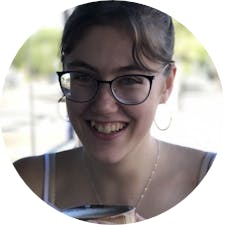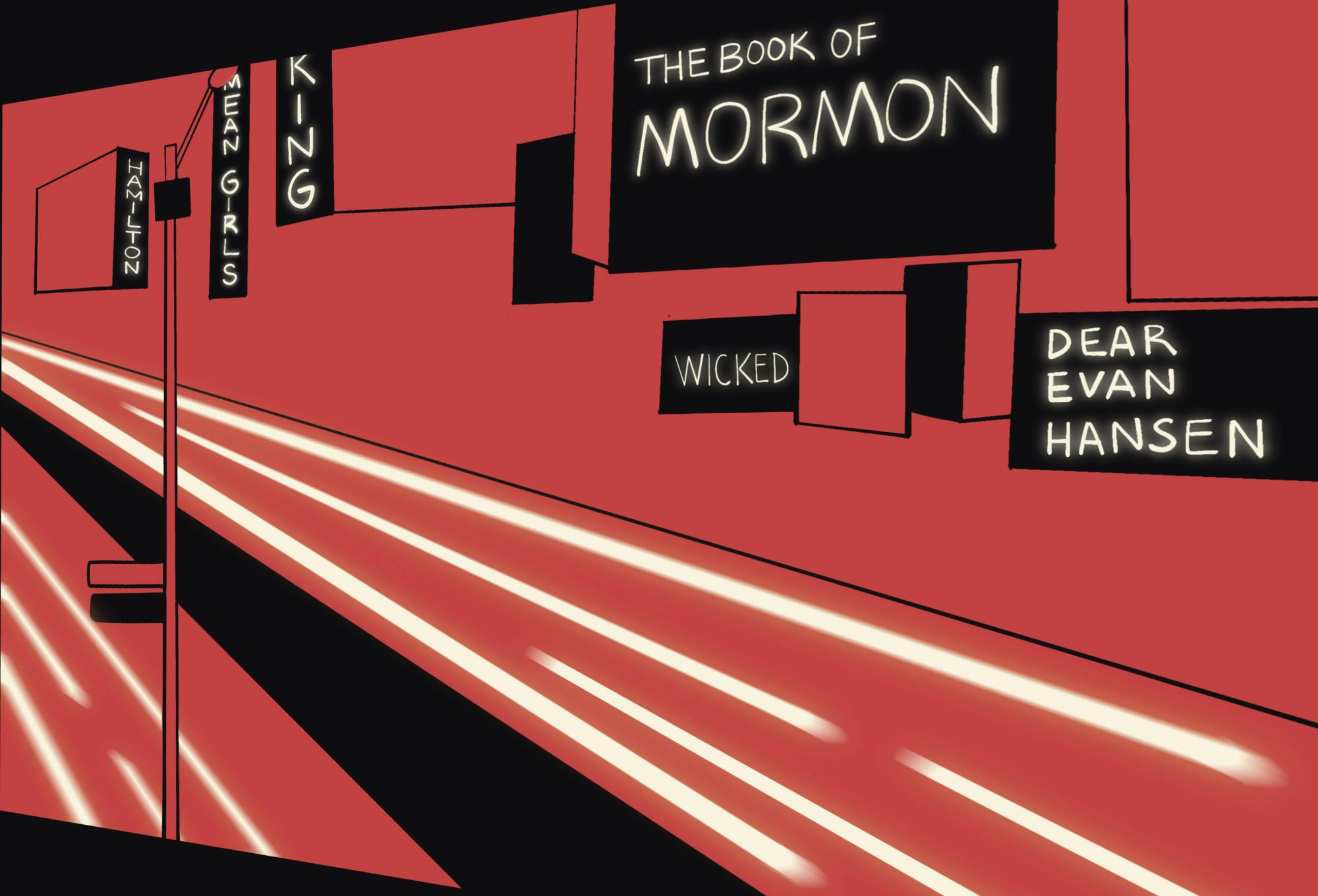Reneé Rapp’s new album “Snow Angel,” released Aug. 18, marks yet another Broadway artist moving into the pop genre. While this phenomenon may seem like a recent trend, with the notable examples of Sutton Foster, Ben Platt and Olivia Rodrigo, the intersection between Broadway and pop has been common throughout music history. Pop artists often perform on Broadway, and musical theater performers frequently produce albums and become touring artists.
Rapp starred in “Mean Girls” on Broadway as Regina George until 2020, and since then, she has never looked back. After acting in the HBO series “Sex Lives of College Girls” in 2021, Rapp released her first single, “Tattoos,” in June 2022, which blew up on TikTok for its powerful lyrics. She followed with her first EP, “Everything to Everyone,” in Nov. 2022, followed by the release of its deluxe version in Feb. 2023. Rapp stands out from other artists because of her incredibly strong vocals — a key pointer to her beginnings in musical theater.
“Snow Angel” represents Rapp’s departure from her musical theater roots and into the pop sphere. In an Instagram post caption, Rapp expressed joy at finding her own sound with “Snow Angel.” As a musical theater performer, artists don’t get a chance to truly be themselves on stage, which may encourage some — like Rapp — to record their own music. Other artists have similarly released solo albums after starting in musical theater.
After finding major success in “Dear Evan Hansen” on Broadway in 2016, Platt released his first album “Sing To Me Instead” in 2019. In 2021, he released his second album “Reverie.” Similar to Rapp, Platt also took some time for his roles in the films “Dear Evan Hansen” and “Theatre Camp.” While Rapp has not returned to Broadway since “Mean Girls,” Platt returned to Broadway in 2022 with the revival of “Parade.”
While Platt and Rapp are two recent examples of Broadway performers moving into pop, the fluidity between the two genres has existed for years. Considering a range of Broadway artists, they have often moved back and forth between art forms and genres. One of the most interesting careers to look at is Sara Bareilles, who started with pop hits before shifting into the musical theater world when she wrote “Waitress” in 2015, based on the 2007 movie of the same name. After the success of “Waitress,” she played Baker’s Wife in “Into the Woods” on Broadway. Her career has moved from early-2000s pop hits, to writing, acting and performing complex stories.
Dolly Parton also fluctuated between country and Broadway with “9 to 5 The Musical.” In 2007, Parton wrote “9 to 5 The Musical,” based on the 1980 movie “9 to 5,” in which Parton also starred. The music from “9 to 5 The Musical” is both on Parton’s solo album “9 to 5,” as well as the original broadway cast soundtrack. The opening song “9 to 5” can be listened to as a musical theater song or Parton pop-country hit.
Now we are seeing not only Broadway artists interact with pop music, but a variety of genres. “Hamilton” breaks into rap and “Hadestown” introduces folk. Broadway has grown beyond the stereotypical classical-leaning sound that some people associate it with. Popular musical theater has changed sonically with shifting preferences in popular music.
Additionally, jukebox musicals — musicals composed of existing, often popular, songs — and belting-heavy roles allow for a genre crossover as we see it today. Suddenly performers are valued for their powerful voices, and classical musical theater training seems less important for a lot of shows. Popular recording artists are now performing in shows, such as Betty Who currently playing Persephone in “Hadestown.” The overlap seems to be less of one type of artist “becoming” the other, and more of a fluid connection between forms of storytelling. Broadway is increasingly sonically diverse, and the stereotypical “Broadway” sound is more fluid than it might seem.
In the past, female leading roles in most musical theater shows were written for sopranos. With iconic shows like Steven Sondheim’s “Into The Woods” or Jerry Herman’s “Hello, Dolly!,” Broadway had a more classical feeling. However, these shows were closer to popular music at the time. “Hello, Dolly!” opened on Broadway in 1963, with Carol Channing starring as Dolly. Channing was known for her performances in theater and film musicals. She also performed at the 1970 Super Bowl halftime show, becoming the first celebrity to perform at the halftime show. The music from shows like “Hello, Dolly!” also moved into the recording artist sphere, the song “Hello, Dolly!” — originally from the musical — was performed and recorded by Louis Armstrong. So while the blending of popular music and Broadway may seem new, the two genres have mirrored each other in the past.
Now, musical theater has changed significantly sonically. Female leading roles are a lot deeper, typically requiring a strong belting voice. Different genres have attracted different kinds of voices and performers to Broadway. More performers than we realize have overlapped with musical theater. Big female voices in the pop scene currently have extensive background in musical theater, such as Ariana Grande, Olivia Rodrigo and now Reneé Rapp.
But, in the end, it’s all storytelling and people who love to sing. Careers in performing are a lot more fluid than we realize at times. Additionally, Broadway has shifted its sound dramatically to adjust to changing demographics and preferences. So, while it’s cool to see Rapp as a Broadway singer who’s turning into the next popstar, it’s cooler to see her as an incredibly talented vocalist and actress who could do anything next. We spend a lot of time putting people into genre or artform boxes, but there’s really no telling what versatile artists like Rapp may produce next.

Elle Muller is a ’24 from Tucson, Arizona. She is double majoring in English and creative writing & theatre. At The Dartmouth, she served as the news executive editor for the 180th Directorate. Before that, she wrote and edited for Arts. In addition to writing, Elle is involved with dance and theatre at Dartmouth.




